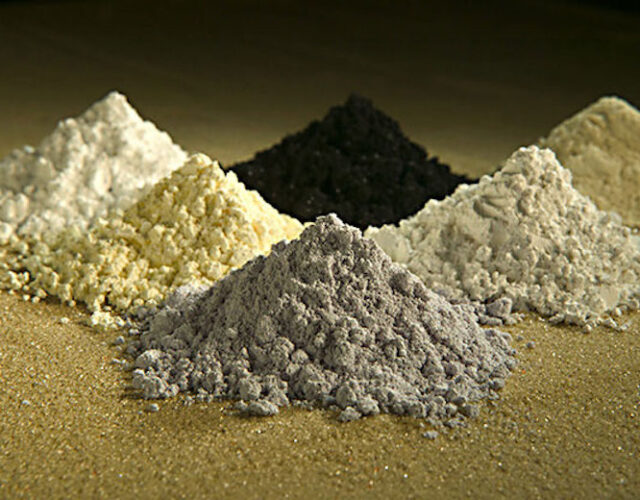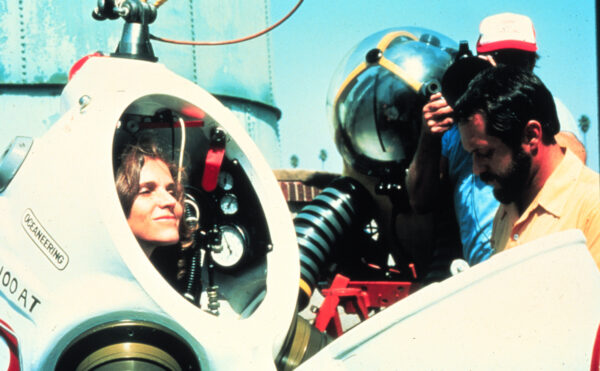A group of elements with “rare” in its name is found almost everywhere in the modern world. Without the rare earths, consumer culture, green technology, communications, and even aspects of defense and health care would be pale shadows of their current selves. But now the rare earths are in short supply. Michal Meyer, Distillations’s editor in chief, spoke with University of Pennsylvania chemist Eric J. Schelter about the importance of these elements and how science might be able to stave off a shortage.
MM: What makes an element a rare earth?
ES: The rare earths are a class of 17 elements, and they are not particularly rare. They came rather late in the discovery of elements because their chemical properties are so similar to each other that scientists had a hard time separating them out. Historically, they’re called “rare” because they are only found in low concentrations in minerals, and they are difficult to isolate.
When it comes to chemical properties, it’s all about how electrons fill their shells. The rare earths represent the 4f-electron series in the periodic table. These electrons are buried in the electronic structure, which allows them to have very pure and well-defined atomistic properties. This configuration gives them fantastically useful magnetic and optical properties.
MM: How do we get rare earths?
ES: Rare earths occur naturally as mixtures. In 1911 Charles James reported the isolation of a measurable quantity of pure thulium, but only after 15,000 successive fractional crystallizations of his impure sample. Later that century Frank Harold Spedding discovered a better way to produce pure rare earths, using ion-exchange chromatography. Starting about 1954 rare earths began to move out of the lab: an early application was in color television. Today pure rare earths are obtained on an industrial scale using liquid-liquid extraction, a process that requires hundreds or thousands of cycles.
MM: Why are they so vital to modern technology?
ES: Lasers are a big user of rare earths, specifically neodymium. Fiber optics that transmit information, such as those that carry Internet traffic, use erbium. Rare earths are also used in sonar equipment and in night-vision goggles. Cerium and lanthanum are important in cracking petroleum to make gasoline.
Magnets are everywhere in modern technology. Turbines that turn wind into electricity require permanent magnets, and the rare earths are unsurpassed; to scale up wind technology and make it more widely available requires rare earths. They are also vital components of hybrid and electric vehicles, from batteries to power trains.
Rare earths have been called the vitamins of industry. They take applications like wind turbines and improve the technology because of their special properties. They are used in superconductors. They are important in medical imaging: contrast for an MRI scan is produced using a gadolinium compound.
MM: If rare earths are common, why do we worry about a shortage?
ES: There’s a big environmental toll to extracting and separating rare earths: acid and radioactive waste are by-products of the mining and separation processes. This waste is highly regulated, which increases the cost of production, except in China. Because these materials are so supreme, over the past 20 to 30 years we’ve come to rely on China’s ability to deliver cheaply. The U.S. Department of Defense relies on Chinese suppliers; the renewable-energy industry relies on China. Right now everything comes back to China: they are experiencing such spectacular growth that their rare-earth export industry is now being redirected internally. More rare earths are staying in China.
The fundamental principles of separating rare earths have not changed since the work of James and Spedding. However, if we can improve the separation technology, that means less hazardous material to dispose of.
MM: What’s a solution to the shortage?
ES: Many chemists consider rare earths “chemically boring” because adding electrons does not change their chemistry, a property that makes them hard to isolate. I’m trying to tie their magnetism to their chemistry, to make each element distinctive so they can be separated more easily and with less environmental impact.
As a starting point, my group is working with the element cerium because it’s a bit easier to add and take away its 4f electrons. It turns out it’s pretty easy to pull out a 4f electron as long as we surround the cerium ion with the right atoms. And we’re on the verge of knowing how to do it with several other high-value rare earths. If we can do that, we’ve made the breakthrough: we could selectively pull out the rare earth we want from a mixture.
The current shortage of pure rare-earth materials is not because of a shortage of the elements. There is a bit of a shortage of fundamental science. I’m excited about the idea of making something useful that can fill an important need. Science is not about being isolated from the real world. That’s an important dimension of being a scientist today—showing why science is important.




